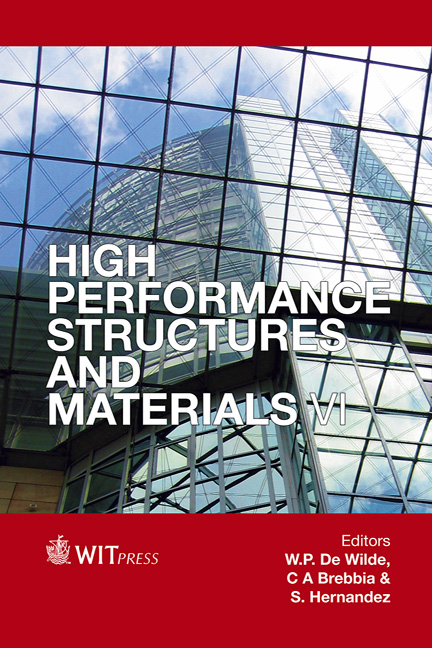Effective Mechanical And Transport Properties Of Polysiloxane Matrix Based Composites
Price
Free (open access)
Transaction
Volume
124
Pages
11
Page Range
185 - 195
Published
2012
Size
1,156 kb
Paper DOI
10.2495/HPSM120161
Copyright
WIT Press
Author(s)
M. Marˇs´alkov´a, S. Urbanov´a, J. Salaˇcov´a & M. ˇSejnoha
Abstract
The present paper describes experimental and numericalwork for the evaluation of the selected effective mechanical and transport material properties of polysiloxane matrix based composites. Three different material systems including carbon, basalt and glass plain weave textile reinforcements are first studied experimentally with emphasis on the influence of processing temperature, number of reinforcement layers and the resulting porosity. The Mori–Tanaka averaging scheme is then selected for the numerical evaluation of effective electric conductivities adopting the standard bottom-up hierarchical homogenization. Keywords: homogenization, ceramic textile composites, Charpy test, falling test, electric conductivity, porosity, Mori–Tanaka method. 1 Introduction Textiles are no longer a sole realm of clothing industry but diffuse in many other lines of business and branches of science. Nowadays, an increasing number of fiber reinforced composite components are being fabricated with load-carrying fibers, which are woven to form a fabric. This reinforcement system has advantages with respect to fabrication as well as mechanical properties. In this regard, carbon-carbon (C/C) textile composites have enjoyed a considerable interest as potential candidates for high-tech applications including rocket industry on the one hand and bone-surgery on the other hand.However, their expansion into points of practical applications has been obstructed by a number of Faculty of Textile Materials ,Technical University in Liberec,
Keywords
homogenization, ceramic textile composites, Charpy test, falling test, electric conductivity, porosity, Mori–Tanaka method.





